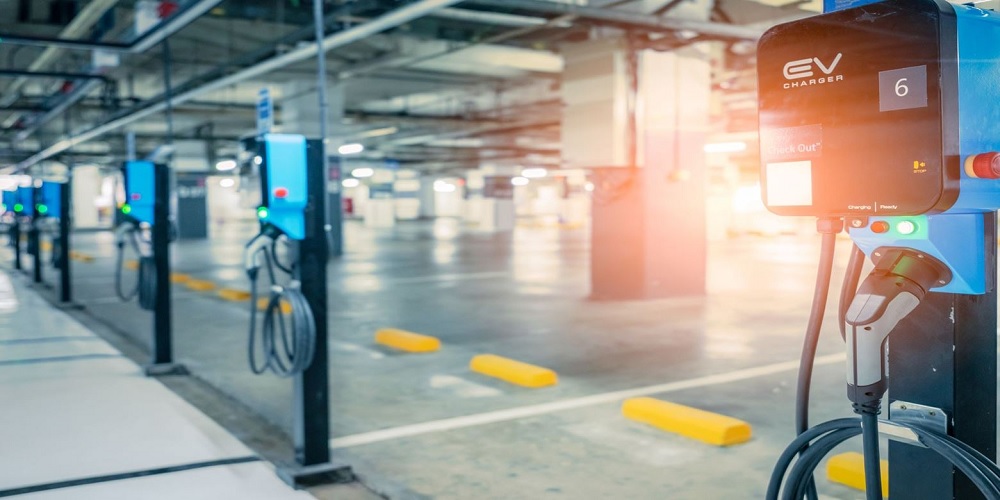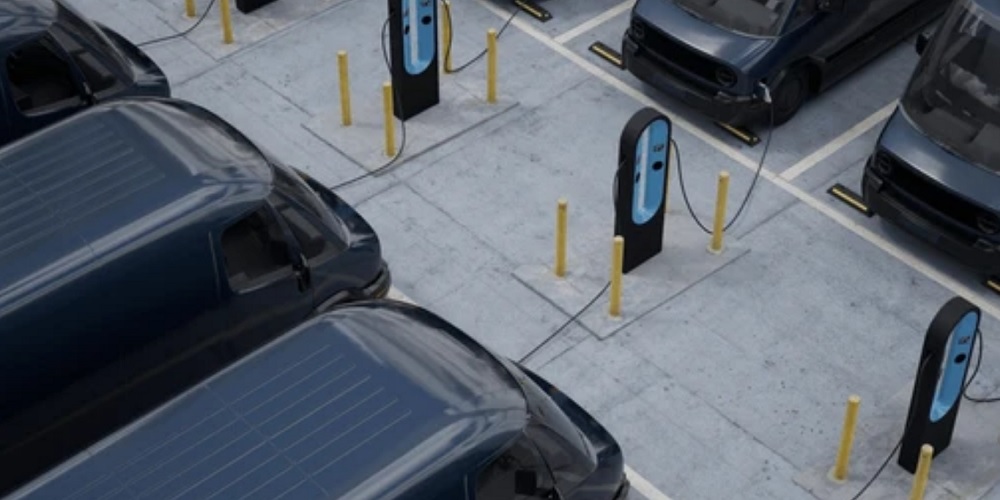3 lessons for public fleet managers on EV parking and charging

Public fleet managers must increasingly accommodate the reality of EV parking and charging. Automakers plan to produce more than 13 million EVs in 2023, which is a 35% increase from 2022.
But how do you prepare for the increased expectation of EV charging and parking? What have other government organizations done to facilitate this change?
This article highlights what has worked for others regarding an EV parking plan and charging stations.
Why public fleet managers need EV parking and charging
Thousands of public fleet managers are looking to EV parking and charging infrastructure to support their greener, cleaner, more sustainable needs.
These include:
- Improved public health: Less pollution and fewer greenhouse gas emissions protect people and the planet with demonstrable health benefits.
- Protection from changing gas prices: Fluctuating gas prices can put increased pressure on organizations, and switching to electric can cut back dependence significantly.
- Transportation demand management: Easily rightsize your existing fleet without reducing transportation options for employees.
- More control over employee safety: Newer EVs with fewer maintenance issues can ensure a safe journey from one point to the next.
- Increased public satisfaction: Quiet, safer, and less obtrusive than traditional vehicles, EVs are favorites for those in dense urban areas.
Adding EV parking and charging to your state or local government: Three lessons
It’s clear that EV parking and charging can do a world of good for your organization. That said, building them for your state or local area may seem overwhelming at first glance.
Let’s look at a few examples of government fleets, so you can gather practical insights about what they did to implement EV infrastructure.
Lesson 1: Increase access to EV parking and charging in densely populated areas
The city of Columbus wanted to add ninety Level 2 chargers to apartments and condominiums in 2023. Multiunit dwellings (MUD) make up 40% of Columbus, and with the local government wanting to increase EV ownership by a factor of five, increased access was essential.
Its flagship program, the Electrification Program, funded eleven new EV-charging sites in central Ohio. Distributing $167,998 to individual projects (with $137,500 in matching dollars from developers), the program eventually funded five additional sites and committed more funds for additional MUD incentives.
The takeaway is that if you want to make the biggest splash on a limited budget, consider installing parking and charging stations near heavily populated areas.
Lesson 2: Consider alternative charging sources to reduce strain on the grid
An organization in California needed a better way to reduce strain on the power grid while meeting customer expectations. At the time, its Level 3 DC EV-charging infrastructure demanded an average of 30 kW, with a maximum reach of 100 kW.
The organization was determined to use a solar PV and energy storage system to take its infrastructure off the grid. Over the course of several months, it combated its initial energy expenditure by:
- Spending an initial cost of $188,000
- Using 90,000 kWh per year
- Achieving an ROI after ~5.2 years
The lesson is that if you’re in an urban area with heavy power demand, you may want to switch to alternative charging sources and reserve your grid for other things.
Lesson 3: Retrofit an older parking area for your EV fleet
The Miami Parking Authority wanted to provide spaces for its government EVs in parking garages scattered across the city. To boost public fleet efficiency and meet present (and future) needs, it needed access to power in certain parking garages and a solid partnership with the right utility vendor.
Today, the organization has more than tripled its availability from six parking spaces to twenty spots. These charging stations are located across six separate garages to help fleet drivers make informed and convenient decisions.
The point is that by evaluating strategic locations and retrofitting older garages, you can quickly establish a greening initiative aligned with your pre-existing infrastructure.
Implement EV parking and charging stations with help from Sourcewell
EV parking and charging infrastructure may take a while to build, but the results and long-term benefits are more than worth the effort. If you’re a public fleet manager looking for assistance during your electrification process, know that there are plenty of resources available to smooth your transition, including the government-led team behind Sourcewell.
Sourcewell is North America’s most trusted provider of cooperative contracts for EV-charging infrastructure. As a trusted authority in the fleet procurement and electric vehicle space, it offers solutions for:
- EV-charging management software
- EV equipment
- EV charging stations
Whether you’re looking for charging station supplies or contractors to retrofit parking lots, you can browse hundreds of cooperative contracts to find the right fit for your needs.
Sourcewell awards contracts in electric vehicle supply equipment. These contracts assure that government entities can take the first step in creating the infrastructure to support green initiatives. See how Sourcewell can save you time and money while getting the fleet equipment that you need already on contract.


